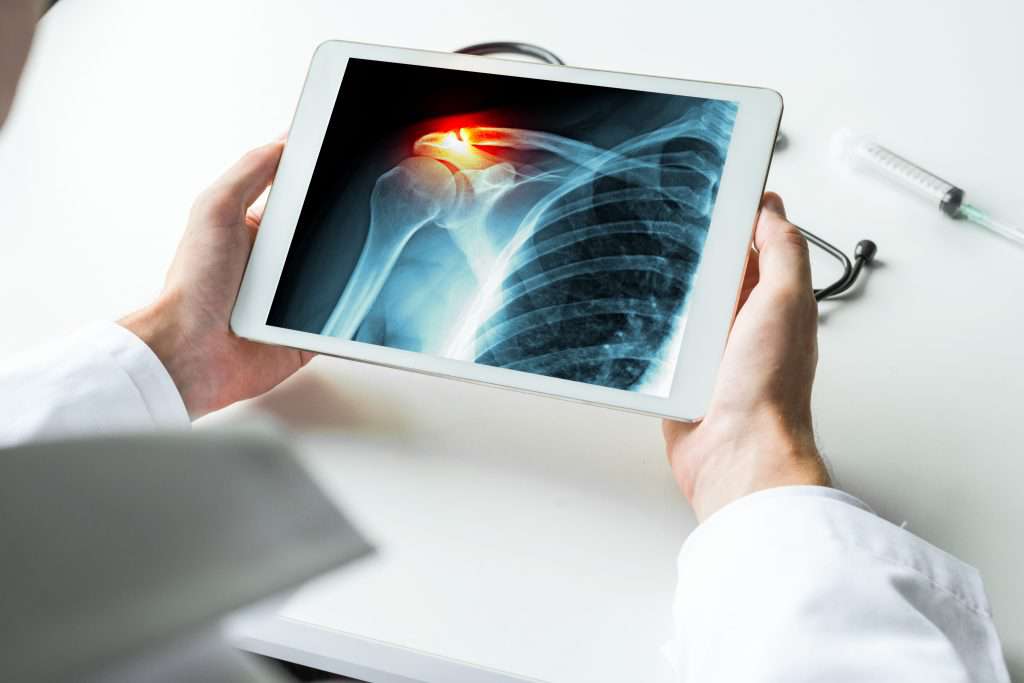How Stem Cells Can Increase Immunity, Reduce Chronic Inflammation, and Potentially Slow the Effects of Aging.

Can Stem Cell Therapy Potentially Help Slow the Effects of Aging?
To see how stem cell therapy can potentially slow the effects of aging, it’s important to understand what the concept of “aging” really means. The signs of aging you can see in the mirror are actually caused by what you can’t see–at the cellular level. As we age, our cells don’t communicate as well with other cells, so they become less efficient at healing and regenerating tissue.
How Does Stem Cell Therapy Work?
The body knows how to heal using its own stem cells. Over time, however, stem cells become less efficient. This intensifies the aging process because of the reduction of the signaling process of native cells that’s essential for regeneration. But an infusion of umbilical cord-derived mesenchymal stem cells (MSC’s) can help these aging cells improve their function and teach them how to communicate with one another once again.
- Slow cellular aging by reducing DNA telomere damage
- Reduce systemic inflammation by regulating cytokine release and other inflammatory responses
- Promote healing of damaged tissues including, muscles, tendons, cartilage, gastrointestinal tissue, and skin
And while our cells can help delay the effects of aging, we must also do our part to stay healthy. In some ways, today’s healthcare system doesn’t live up to its name because it’s really more of a “sick care” system we use when we get ill. Staying healthy? That doesn’t seem like part of the “system” at all, which is unfortunate because not getting sick in the first place ranks as one of the best ways to stay healthy.
Staying healthy in general is a reason why we’re seeing more and more patients turning to stem cell therapy, not just to treat a sickness or injury, but to enhance overall health and wellness. This is because of the overall systemic benefits that stem cells can provide.
At BioXcellerator, we treat patients for a wide range of diseases and injuries–from osteoarthritis, degenerative disc disease, autoimmune diseases, gastrointestinal disorders, and many others. But what’s interesting about stem cell therapy is that regardless of what a patient is being treated for, one common theme frequently resounds. Patients report they, well, just “feel.”
On follow-up calls, our medical team often hears from patients–young and old alike–report that they have more energy, more clarity of thought, fewer aches and pains, and an increased overall sense of wellness. That’s not just immediately after treatment, but over the following weeks and even many months later.
This sense of wellness is also confirmed by scientific evidence. As research continues, we’re learning more about the systemic benefits of stem cell therapy and how stem cells help control two natural biological processes that are essential to our survival, but can also turn against us and lead to disease and premature aging. These include immunity and inflammation.
Treating More than Just Symptoms—Universal Benefits of Stem Cell Therapy
Treatment can also:
- Alleviate chronic pain
- Improve mental clarity
- Enhance sexual wellness
- Increase energy levels
- Potentially slow the onset of autoimmune and degenerative conditions
- And more
Medical treatments for a wide range of conditions are often based on medications. Yet we are not born with a supply of artificial chemicals such as pharmaceuticals to ingest when we need to feel well.
We are, however, born with stem cells. As our Chief Medical Officer, Dr. Karolynn Halpert often explains, “the body knows how to heal itself.” She’s right, of course, pointing out that we are born with stem cells that can become any type of cell the body needs. After stem cell therapy, an infusion of highly potent stem cells can signal the body’s own cells to heal a wide range of disorders.
For example, when we treat a patient for a serious gastrointestinal disorder, those stem cells signal other cells to regenerate digestive tissue and reduce inflammation. In degenerative disc disease in the spine, those stem cells can promote healing of disc tissue.
Your body doesn’t know why it’s seeing new cells available. So it also uses those cells to help restore balance across two intricate biological signaling systems that are essential to wellness, but ironically, can also threaten our health.
- Immunity is one example–seemingly a healthy attribute. But there are many cases when our body’s immune response can turn against us.
- And while inflammation seems unpleasant, it is actually the body’s natural signaling system that damage needs to be healed. Chronic inflammation, however, can result in serious health issues.
These two biological processes are interrelated and can fall out of balance when an overactive immune response triggers excess inflammation.
Let’s look more closely at how these two processes work and why too much of a good thing can actually turn bad.
Your Immune Response: Fighting a Battle Every Day, but Who’s the Enemy?
We’re not aware of it of course, but there’s an army of immune system cells inside of each of us that fights against dangerous and threatening enemies every day. Some immune cells are like “scouts,” patrolling the body for various pathogens such as viruses that we’re constantly exposed to. When they detect the presence of enemy pathogens, they signal other types of immune cells—“fighting” cells—that may have “experience” fighting the same battle before.
Immunity helps defend against threats by specific pathogens. For example, you might come down with a viral disease, such as rubella.
Your immune cells will initially fight off the virus, protecting you from further infection. After this response, your body often will produce “memory” immune cells related to this specific virus. If this virus returns, these memory cells are triggered to attack this pathogen, greatly reducing the chance of re-infection and illness.
This is exactly why the medical community has focused so much attention on developing and improving vaccines for COVID. Indeed, the global pandemic clearly shows us how immunity is essential to survival. Without a well-functioning immune system, you won’t stay healthy very long.
Unfortunately, immunity can backfire. In some cases, your immune system which is designed to attack foreign microbes actually attacks your own tissues, essentially killing your own cells. Normally, your immune system can distinguish between your own cells and a foreign cell, but there are autoimmune diseases that result in an antibody response to your own cells, causing damage to healthy tissue.
One example is rheumatoid arthritis. This disorder is caused by an immune response that isn’t properly modulated and triggers pain. What causes that pain? Inflammation, a response that’s influenced by the immune system. Inflammation is another biological process that we need to survive, but too much of it can cause serious disease and premature aging.
How Do Stem Cells Work to Reduce Chronic Inflammation?
One reason stem cells can provide systemic benefits to overall health is that they contain powerful anti-inflammatory properties that help the body control the inflammatory response.
The word “inflammation,” is usually associated with pain, swollen skin, stiff joints, and evidence of damage we can see on the outside of our bodies. But inflammation goes deeper than that. Inflammation can be found throughout your entire body—even inside your brain–sometimes without causing pain at all.
This can be very damaging to your organ systems. Excess inflammation or chronic inflammation is a hallmark of most major diseases–cancer, cardiac disease, Alzheimer’s disease, diabetes, and even mental disorders such as depression.
So while we need inflammation because it’s the body’s natural signaling system that something’s wrong, chronic inflammation can actually trigger disease.
You see, when your cells are in distress, they release chemicals that alert other cells in the body that help is needed to heal damage. The problem with inflammation, however, is that if your body stays on high alert constantly, the result can be serious damage to vital organs, such as the brain, heart, and organs in your gastrointestinal tract (gut).
For example, when inflammation persists in your blood vessels, it can promote the buildup of dangerous plaque. That, in turn, triggers even more inflammation and the potential for even more blockage of blood vessels. Left out of control for too long, excess inflammation can actually lead to stroke or cardiac arrest.
Scientists also know that ongoing neuroinflammation in the brain may be a factor in the development of disorders such as Alzheimer’s disease. It can also cause insulin resistance that over time leads to diabetes. And inflammation causes the pain from rheumatoid arthritis, which as noted can be triggered by an overactive immune response.
Millions of people suffer from chronic inflammation. But stem cells help regulate the body’s inflammatory response in a way that not only can help alleviate chronic inflammatory diseases such as rheumatoid arthritis, but also reduce chronic inflammation.
There are other many disorders that are based on this relationship between an overactive immune response and the inflammation that results. These include multiple sclerosis, lupus, Crohn’s disease, scleroderma, psoriasis, and many others.
All Stem Cells Are Not Equal—Umbilical Cord-Derived Stem Cells are the “Gold Standard”
The four most important factors that contribute to the effectiveness of stem cell therapy are potency, purity, quantity, and viability of cells.
How the cells are harvested and cultured are also important factors on how well the cells will perform.
There are many different types of stem cells:
- Adult stem cells that are harvested from adipose (fatty) tissue
- Adult stem cells from bone marrow
Unfortunately, cells from these two sources are older cells, so they are not as potent, reducing their efficacy and therapeutic potential.
- Adult umbilical-cord derived stem cells
Research shows that mesenchymal stem cells (MSC’s) derived from umbilical cords are more potent and offer more healing potential than other cells.
Treatment is further enhanced by how cells are processed. At BioXcellerator we use a proprietary protocol to identify the cells with the best potential to stimulate healing. Then these cells are cultured and expanded into infusions with a high quantity of cells to maximize the potential to stimulate healing, reduce inflammation, and regenerate damaged tissues—resulting in the best possible patient outcomes.
Treating Autoimmune Diseases with Stem Cell Therapy
Because of the relationship between immune response and inflammation, traditional treatments for autoimmune diseases can often cause more damage. For example, many standard treatments for these conditions include the use of steroid-based medications, which can cause side effects and damage to other healthy tissue.
But stem cells can help modulate an overactive immune system without the need for possibly dangerous steroids in way that modulates the immune response so it fights against diseases that it should be fighting–not against our own bodies. That in turn, keeps inflammation under control.
So yes, you can have too much of a good thing. We need inflammation, but not on an ongoing and chronic basis. And as the recent COVID pandemic shows, we all need immunity to defend our bodies from attack of foreign pathogens, as long as it doesn’t start attacking our own cells.
Many of our patients, regardless of the specific treatment they are receiving, report feeling more energy, vitality, improved cognitive ability and less pain in the weeks and months after their stem cell treatment. To a great extent, that’s because stem cells have powerful anti-inflammatory properties and immune modulating capacity that the body innately uses. The body does indeed know how to heal itself—especially when it has access to plenty of high-potency stem cells.
If you or a loved one is suffering from an autoimmune disease, chronic inflammatory disorder, or other degenerative condition, contact us to find out if treatment is right for you. Schedule a free consultation.


